Endangered Animals Throughout the World
There are over 1 million different types of species located on planet earth and over a thousand of them make it on the endangered animals list. In order for an animal to be considered endangered, it must be at risk of becoming extinct from one of two things: diminished numbers due to excessive hunting/poaching, or rapidly changing environmental parameters, such as global climate changes and deforestation. The vast majority of endangered species are located in the continents of North & South America, Asia, and Australia. Since there are so many different endangered animals, we are only going to focus on fifteen of the more recognizable ones, such as lions, tigers, and bears (oh my!). There are several different levels of endangerment, so listed below is a key to help gauge how endangered an animal may be:
[1] = Critically endangered
[2] = Endangered
[3] = Vulnerable
[4] = Near threatened
[5] = Lesser concern

1. Giant Panda
Population: There are approximately 2,000 giant pandas living in their natural habitat
Lifespan: 20-30 years
Location: Central China
Threat Level: Endangered [2]
Endangering Factors: Loss of habitat, low birth rates, and excessive poaching are all significant factors
that have contributed to classify the giant panda as one of the most critically endangered species.
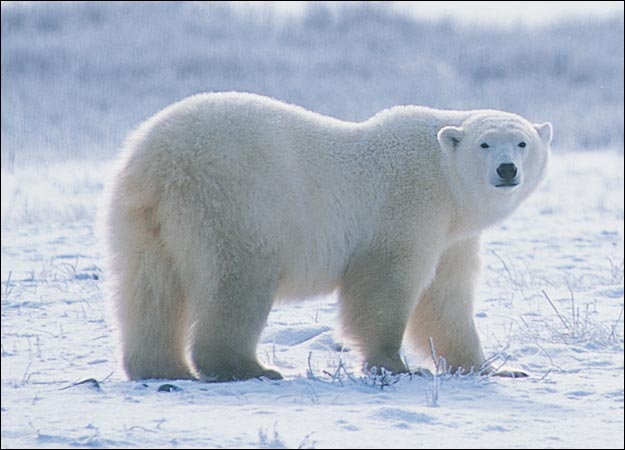
2. Polar Bear
Population: There are an estimated 20,000 - 25,000 polar bears left on the earth
Lifespan: 20-25 years
Location: Canada, Denmark, Alaska, Norway, Russia, & the Artic Circle
Threat Level: Vulnerable [3]
Endangering Factors: Global climate changes and pollution from oil & gas development are the two main
contributing factors to the decline of mother nature's largest land carnivore.
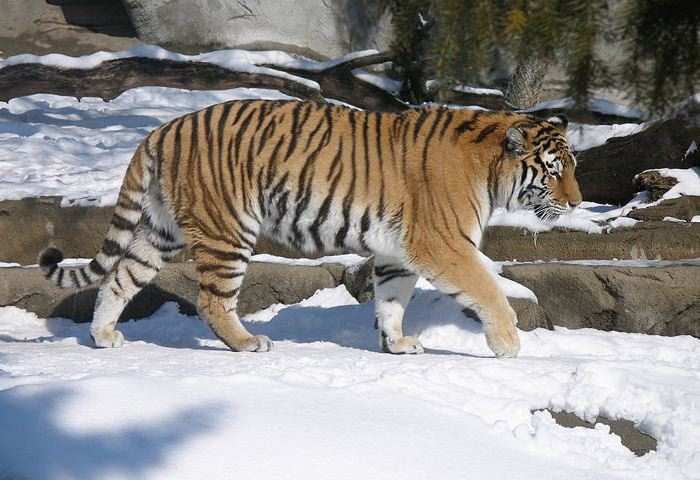
3. Tiger
Population: Estimates put the tiger population at less than 3,200
Lifespan: 10-15 years
Location: India, China, & Southeast Asia
Threat Level: Endangered [2]
Endangering Factors: Poaching for their fine fur mixed with a large destruction of their natural habitat
have caused a steep decline in the number of tigers left in the world.

4. Snow Leopard
Population: There are only between 5,000 and 7,000 snow leopards left in the world
Lifespan: 15-18 years
Location: Central and south Asia (Russia, China, India, Pakistan, etc.)
Threat Level: Endangered [2]
Endangering Factors: An unbalanced mountain ecosystem along with excessive deforestation are causing
a decline in the snow leopard population.

5. Cheetah
Population: There are an estimated 12,500 cheetahs left in Africa
Lifespan: 12-14 years
Location: Africa and southwestern Asia
Threat Level: Vulnerable [3]
Endangering Factors: Poor genetics, birth defects, and excessive hunting have caused the total number
of cheetahs to diminish.
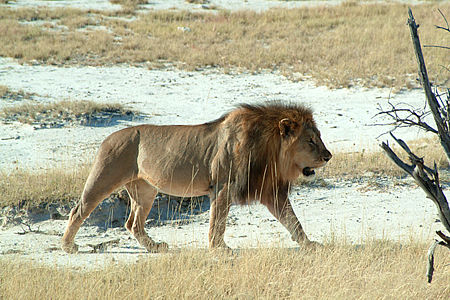
6. Lion
Population: There is a wide estimate of 15,000 - 45,000 lions living in the wild
Lifespan: Lions generally live for 10-14 years outside of captivity
Location: Mainly Africa, as well as a few parts of India
Threat Level: Vulnerable [3]
Endangering Factors: Climate change, spread of disease, and human poachers are the top three factors
that have caused the lion population to dwindle.
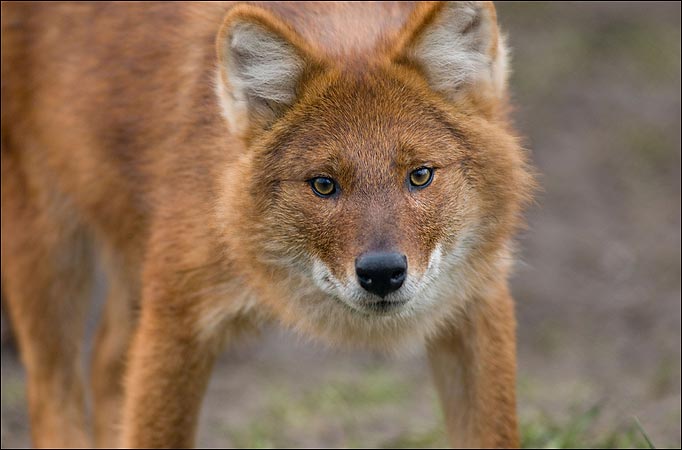
7. Dhole
Population: There are less than 2,500 dholes left and their numbers continue to decrease
Lifespan: 10-12 years
Location: India, North Korea, & Tibet
Threat Level: Endangered [2]
Endangering Factors: There are a number of reasons the Dhole is inching closer to extinction, including
constant habitat loss, reduction of prey, rampant disease, and fierce competition from similar predators.
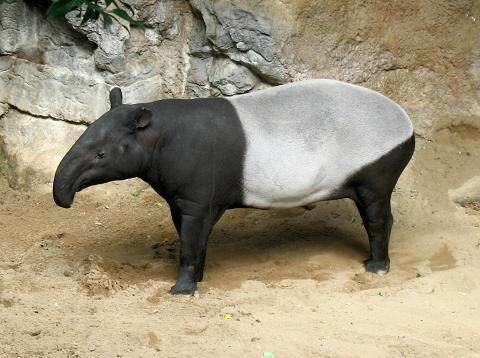
8. Tapir
Population: There are approximately 2,500 tapirs in the wild, and a couple hundred in zoos
Lifespan: 25-30 years
Location: Central America, South America, & Southeast Asia
Threat Level: Endangered [2]
Endangering Factors: Lack of genetic diversity along with frequent habit loss have caused the Tapir
to be considered one of the most endangered animals on the planet.
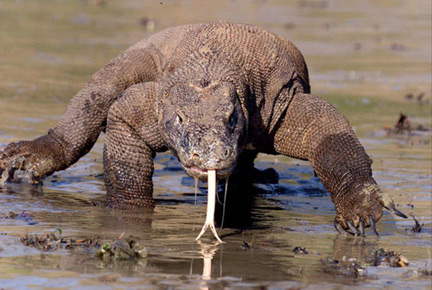
9. Komodo Dragon
Population: There are around 4,000 - 5,000 komodo dragons living in the wild
Lifespan: 50 years
Location: Indonesian islands of Komodo, Rinca, Flores, and Gili Motang.
Threat Level: Vulnerable [3]
Endangering Factors: Reproductive probelems, volcanic activity, earthquakes, decline in prey, tourism,
and poaching have all contributed to the decline of komodo dragons.

10. Chinese Alligator
Population: There are fewer than 200 Chinese alligators remaining in their natural habitat
Lifespan: 50-60 years
Location: Yangtze river, China
Threat Level: Critically endangered [1]
Endangering Factors: Loss of habitat due to agricultural expansion plus the poisoning of rats (part
of the alligator's dinner menu) are to blame for their rapidly shrinking numbers.

11. Mountain Gorilla
Population: There are just under 800 mountain gorillas left in the world
Lifespan: 40-50 years
Location: Central Africa & Congo
Threat Level: Critically endangered [1]
Endangering Factors: Loss of habitat, disease, and poaching are the three main contributing factors
to their critically endangered status.
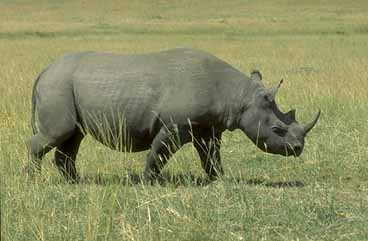
12. Black Rhinoceros
Population: The number of black rhinos has actually increased to 4,000 over the past couple of years
Lifespan: 35-50 years
Location: Eastern & South Africa
Threat Level: Critically endangered [1]
Endangering Factors: The biggest threat to black rhinos have been vigorous poachers who seek after
their unique horns, which are used in traditional Chinese medicine as well as ceremonial daggers.

13. Island Fox
Population: There are approximately 700 island foxes, up 685 from 10 years ago
Lifespan: 4-6 years
Location: Channel islands of California (USA)
Threat Level: Critically engangered [1]
Endangering Factors: Golden eagle predation, disease, feral animals, and diminished food supplies have
all contributed to the endangerment of island foxes.

14. Great White Shark
Population: Unknown, but the dwindling number of Great Whites appears to be on the rise
Lifespan: 25-30 years
Location: The oceans, worldwide (prefer warmer water)
Threat Level: Vulnerable [3]
Endangering Factors: Fishermen who seek after their jaws, teeth, fins, and flesh, since such parts
can be considered highly lucrative.
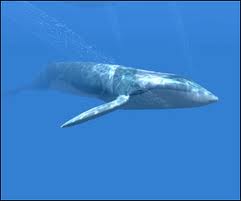
15. Blue Whale
Population: Rough estimates indicate there are 10,000 - 12,000 living Blue Whales, possibly more
Lifespan: 60-80 years
Location: Antarctic, Indian, Pacific, & Atlantic Oceans
Threat Level: Endangered [2]
Endangering Factors: Excessive hunting, collisions with vessels, and getting trapped in fishing gear
are all factors believed to have a negative effect on the overall Blue Whale population.
comments powered by DisqusSee some of the cutest animals nature has to offer
